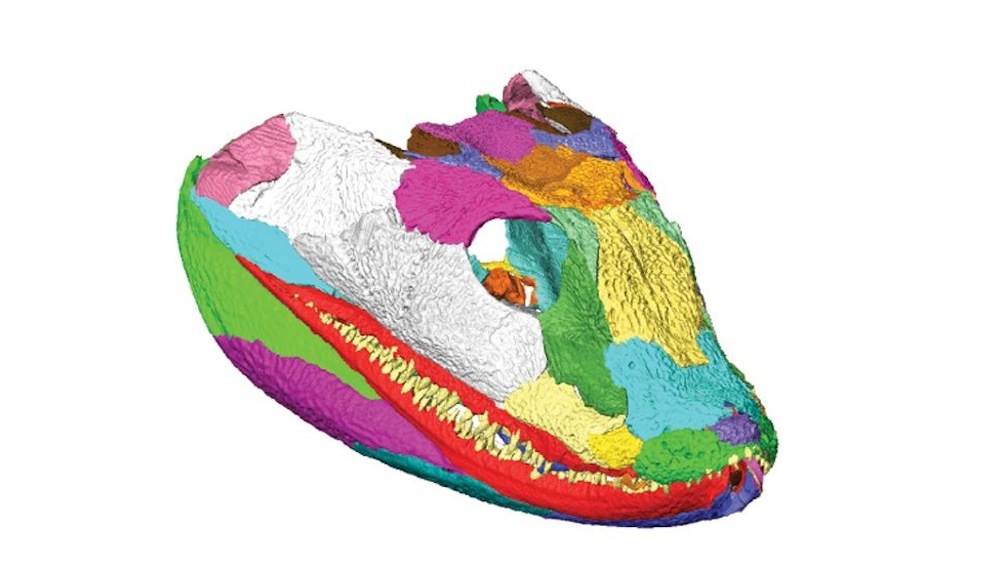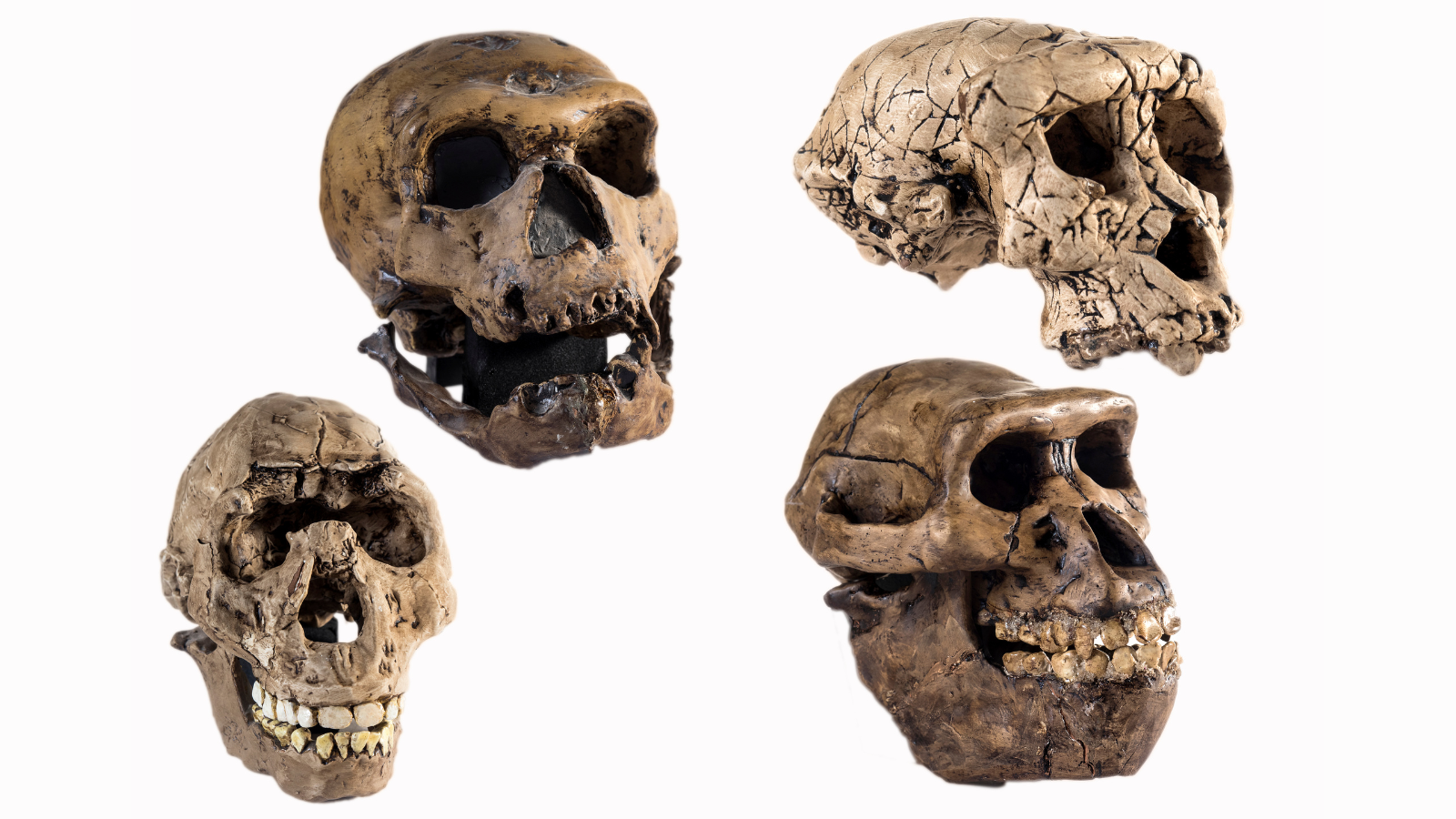Early Land Creature Had 4 Legs & Crocodile-Like Skull

One of the earliest animals with a backbone to walk on land may have been more like the modern crocodile than previously thought, according to 3D computer models of its skull, researchers say.
This finding supports the idea that there was a great diversity among these early land-dwellers, scientists added.
One of the most pivotal moments in the evolution of the animal kingdom was when a few pioneering fish made forays on land. These first tetrapods, or four-legged animals, eventually gave rise to amphibians, reptiles, birds and mammals. [Image Gallery: Evolution's Most Extreme Mammals]
One of the oldest-known tetrapods was Acanthostega gunnari, which lived 380 million to 360 million years ago. Adults of this species were about 2 feet (60 centimeters) long, which "is actually on the small side for an early tetrapod,"lead study author Laura Porro, an evolutionary biomechanist at the University of Bristol in England, told Live Science. "It's about the same size as the living hellbender salamander from the eastern USA, although the two species are not closely related."
Its fossils are found in East Greenland, in deposits laid down by ancient rivers. "Today East Greenland is in the Arctic, covered by the largest ice sheet outside Antarctica," Porro said.
Although this ancient tetrapod had limbs with digits, "Acanthostega was still an aquatic animal, living its whole life in the water," Porro said. "Acanthostega probably inhabited shallow, slow-moving rivers and wetlands, using its limbs to navigate around rock debris and vegetation. It was most likely an ambush predator like living crocodiles or giant salamanders, waiting for prey to swim by. Other fauna that lived alongside it include lobed-fin fishes related to modern lungfish and other types of ancient fish."
Acanthostega fossils have yielded vital clues as to how early tetrapods made the shift from water to land. However, after hundreds of millions of years buried in the ground, Acanthostega specimens are often damaged and deformed, limiting what scientists can learn about this critical time in evolution.
Get the world’s most fascinating discoveries delivered straight to your inbox.
To learn more about how Acanthostega looked, the researchers used high-resolution X-ray computed tomography (CT) scanning to analyze three fossil skulls of the species, nicknamed "Rosie," "Grace" and "Boris." Using this data, they developed the first 3D computer model of Acanthostega's skull, "reversing millions of years of damage and deformation," Porro said.
The scientists found the reconstructed skull, which measured about 4 inches (10 centimeters) long when full grown, had a longer snout and a more strongly hooked lower jaw than thought.
"Because early tetrapods skulls are often 'pancaked' during the fossilization process, these animals are usually reconstructed having very flat heads," Porro said in a statement. "Our new reconstruction suggests the skull of Acanthostega was taller and somewhat narrower than previously interpreted, more similar to the skull of a modern crocodile."
In contrast, most early tetrapods "are depicted with very flat heads, resembling living frogs and salamanders," Porro said. "We are beginning to realize that not all early tetrapods were the same, and that there is a lot of diversity even among the earliest land vertebrates. These differences in skull shape may reflect differences in how these animals captured their prey or what they were feeding on."
The size and distribution of Acanthostega's teeth and the shape of the junctions between the bones in the skull also suggest it may have initially seized prey with its large front teeth and restrained struggling victims with its smaller back teeth.
"Feeding is really important in driving animal evolution and strongly influences skull shape," Porro said. "We know that early tetrapods were predators based on tooth shape. However, as vertebrates came onto land, they would have encountered new potential food sources — plants, insects, which had already moved onto land, and so on. As animals started to exploit new, untapped food sources, we expect a spike in the number of species. Acanthostega is interesting because it is right on the cusp of this water-to-land transition."
The researchers plan to apply their methods to other squashed tetrapod fossils to better understand how they might have looked and how they might have met the challenge of living on land and "to understand how function evolved through time," Porro said.
Porro and colleagues Emily Rayfield and Jennifer Clack detailed their findings online today (March 11) in the journal PLOS ONE.
Follow us @livescience, Facebook & Google+. Original article on Live Science.



